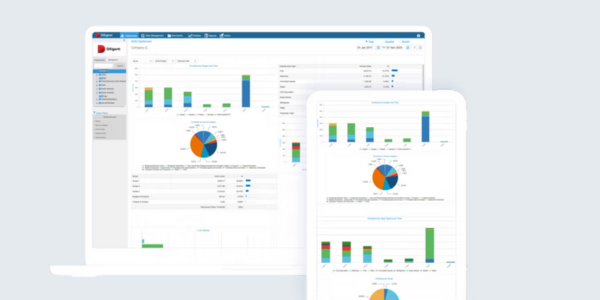Reflections on COP29: A turning point for ESG?

COP29 has come and gone, leaving the global community with much to reflect upon regarding sustainability and the critical role of the environmental, social, and governance (ESG) agenda.
This year's summit marked a pivotal moment for ESG professionals — not just as a continuation of ongoing conversations but as a definitive juncture for strategizing in a rapidly evolving landscape. As we examine the summit's key discussions and themes surrounding ESG, three takeaways stand out.
1. ESG disclosure: From optional to operational
One of the most striking shifts evident at COP29 was the move toward standardized and mandatory ESG disclosures. Building on frameworks like the ISO ESG Implementation Principles unveiled during the summit, the conversation around consistency in ESG reporting reached new heights. These principles aim to address inconsistencies across sectors and geographies, providing companies with a robust framework to integrate sustainability into their core strategies.
This shift signals a global call to action for companies, as voluntary ESG efforts give way to enforced regulations such as Europe’s Corporate Sustainability Reporting Directive (CSRD). Practitioners must prepare now by developing internal processes that align sustainability metrics with financial reporting standards.
Key questions for businesses to address include:
- How can we ensure data accuracy and completeness?
- Are our systems capable of adapting to evolving ESG frameworks across jurisdictions?
Technology will play a central role in answering these questions. COP29 highlighted the importance of adopting tools that streamline data collection, improve reporting accuracy, and provide actionable insights. Advanced platforms can track environmental impacts, monitor supply chain transparency, and align governance practices with broader ESG objectives. This isn’tjust about regulatory compliance; it’s about embedding sustainability into the heart of business operations.
For example, at Diligent, we’re conducting gap analyses and leveraging technology to comprehensively measure ESG metrics. Organizations that invest in such technology now will not only ensure compliance but also gain a competitive edge, demonstrating leadership in sustainability while navigating the complexities of evolving standards.
The lesson is clear: preparation and capacity-building are non-negotiable. ESG isn’t a sprint to a single goal but a marathon requiring consistent effort.
2. Renewable energy and the challenge of transition
Another prominent theme was the continued push for renewable energy adoption, with COP29 recognizing both its potential and the disparities in accessibility across markets. For example, while the UK offers accessible renewable energy tariffs, other regions, including parts of the US, face significant infrastructural and accessibility gaps.
The implications for companies are twofold:
- Seize opportunities where renewable energy is more accessible to position your organization as a leader while markets mature.
- Plan for global standardization and increased accessibility by investing early in renewable energy transitions and aligning with net-zero goals.
Beyond compliance, these investments signal a company’s commitment to sustainability, fostering stakeholder trust. COP29’s discussions highlighted the strategic value of embedding renewable energy goals within broader ESG strategies, even as organizations navigate current challenges.
Technology will again play a vital role here. Advanced platforms enable organizations to monitor their energy usage, assess renewable energy options, and optimize transitions to cleaner power sources. These tools help companies stay ahead of regulatory requirements while fostering operational efficiencies and signaling their commitment to sustainable practices.
While markets vary, businesses must balance optimism with pragmatism — planning for gaps but remaining undeterred in progress.
3. Reframing ESG: From burden to strategic imperative
Skepticism around ESG often paints it as a bureaucratic burden, but COP29 reinforced the importance of viewing it as a strategic opportunity. Frameworks like the ISO ESG Implementation Principles and advanced reporting technologies enable companies to enhance accountability and transparency. These are not just moral imperatives — they are market differentiators in an increasingly eco-conscious world.
The summit challenged companies to embrace ESG as a driver of long-term resilience and innovation. Transparent practices and measurable progress are no longer optional — they're critical for maintaining investor confidence, securing access to capital, and aligning with consumer values.
Technology amplifies this opportunity by enabling companies to go beyond compliance. It provides actionable insights that inform strategic decisions, fosters innovation, and empowers businesses to lead with data-driven sustainability practices. Companies that adopt these tools can better align their ESG initiatives with operational goals, creating a roadmap for success in a competitive, sustainability-focused market.
While a gap persists between lofty commitments and actionable results, ESG professionals must lead the charge in bridging it. This means building processes, fostering cross-departmental collaboration, and using technology to track progress effectively.
COP29 also emphasized that embracing ESG creates ripple effects: stronger brand loyalty, access to sustainable markets, and alignment with the future of global commerce. For organizations willing to lead, ESG represents a profound opportunity for growth and innovation.
Final thoughts
Reflecting on COP29, it’s clear that the path to sustainability, while complex, is filled with potential. The summit demonstrated that climate action and sustainability remain paramount concerns, even amid economic or political uncertainty.
For ESG professionals, the message is unambiguous: this is our moment. Whether your company is directly impacted by regulatory changes or indirectly influenced through clients and partners, the time to act is now. By strengthening internal systems, capitalizing on early opportunities, and reframing ESG as a cornerstone of resilience, companies can lead with purpose.
Expertly manage ESG considerations
Master sustainability and unlock growth opportunities with Diligent ESG — your all-in-one solution for data collection, reporting, and scaling with confidence.
Find out more